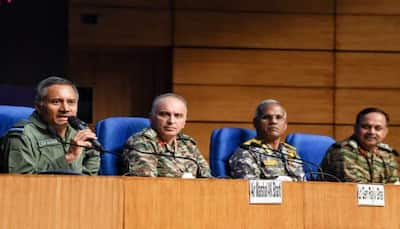New Delhi: Bullets. Blood. Broadcasts. Borders bracing for battle. What began as a brutal terrorist attack in the idyllic meadows of Pahalgam’s Baisaran, Kashmir, snowballed into one of the most dangerous escalations in India-Pakistan relations since the Kargil conflict. Twenty-six tourists were killed and dozens injured in the April 22 massacre. India, in response, launched ‘Operation Sindoor’ – a bold and coordinated assault across nine terror-linked sites in Pakistan and Pakistan-occupied Kashmir (PoK).
But this time, something feels different. Not just a retaliatory strike, a warning shot with echoes of a region simmering on the brink.
Named after the traditional vermillion symbol of womanhood and sacrifice, ‘Operation Sindoor’ was not just about military precision. It was about political messaging. It was about cultural symbolism. And it was about vengeance – public, televised and loud.
This tri-service operation brought together the Indian Army, Navy and Air Force in a manner unseen since the 2019 Balakot strikes. Drones, fighter jets and artillery pounded known terror training camps reportedly linked to groups such as the Jaish-e-Mohammed (JeM), the Lashkar-e-Toiba (LeT) and the Hizbul Mujahideen. And while official casualty counts remain under wraps, experts are calling it India’s most expansive counter-terror response in years.
India and Pakistan have already fought four wars – in 1947, 1965, 1971 and 1999. Each began with an act of provocation. Each ended with uneasy ceasefires. But the pattern remains – terror attack, Indian retaliation, diplomatic tension and international intervention.
What is alarming is that the script is once again unfolding with chilling familiarity. Since Pulwama in 2019, there has been no full-scale war – but the attacks have not stopped. The 2024 Reasi bus bombing. The constant infiltration attempts. The political temperature rising with each body laid to rest.
Now, the ‘Operation Sindoor’ raises a critical question – is South Asia tiptoeing toward its fifth war?
Unlike in past decades, today’s geopolitical climate is less forgiving. Pakistan’s internal turmoil, Afghanistan’s instability and shifting alliances with China and Russia make the subcontinent more unpredictable than ever.
India, on its part, is signaling a posture of zero tolerance – not just diplomatically but through visible and calibrated military responses.
No longer content with back-channel warnings, India has made its strikes not just forceful but public. As much a psychological move as a strategic one, the name “Sindoor” marks a new era of warfare – where perception, narrative and optics weigh as heavily as troop movements.
Each war between India and Pakistan began with miscalculations – an underestimation of resolve and a misreading of red lines. From the tribal militias of 1947 to the Kargil incursions of 1999 and now the bloodbath in Pahalgam, the patterns of provocation are familiar.
But 2025 brings new uncertainties. Technology has advanced, arsenals have expanded and nuclear overhangs loom larger than ever. If diplomacy fails this time, the fifth Indo-Pak war might not just be fought in the mountains of Kashmir – but across cities, cyberspace and global opinion.
‘Operation Sindoor’ may have ended in minutes. But its political, emotional and military aftershocks are only beginning. For India, it is a statement of resolve. For the world, a dangerous standoff between two nuclear-armed nations teetering on the edge – again.
Stay informed on all the , real-time updates, and follow all the important headlines in and on Zee News.








